Lukas Moll is a queer artist based in Cologne, Germany. His work is deeply rooted in the experiences and struggles of the LGBTQ+ community, aiming to bring visibility to themes like isolation, discrimination, and resilience. He also explores topics such as sexual violence and abuse, using art as a medium for healing and advocacy.
Read moreBIOPIC | Viktoria Savenkova →
ADD TO YOUR ART COLLECTION @ARTSY
Viktoria Savenkova is a talented artist known for her evocative and psychological portraits. Her work often explores themes of inner turmoil, human emotions, and societal expectations. She uses her art to delve into the complexities of the human experience, creating pieces that invite deep reflection and conversation.
Savenkova portrays the tension between an individual's inner thoughts and outward expressions. Her paintings often reflect the struggle between personal desires and societal expectations.
Many of her works highlight the fragility of human emotions. She captures raw, unfiltered moments of vulnerability, allowing viewers to connect on a deeply emotional level.
A recurring motif in her art is the metaphorical "mask" that people wear to conform or protect themselves. This idea symbolizes the dissonance between one's true self and the personas they project to the world.
Her work explores feelings of solitude and the longing for genuine human connection. Through her evocative use of colors and composition, she conveys both the pain of isolation and the hope for understanding.
Some of her artworks critique social behavior and collective norms, inviting reflection on how societal pressures shape individual lives.
Savenkova's art often uses contrasting elements--such as light and shadow or sharp and soft textures--to symbolize the complexity of these themes. Her ability to convey profound meaning through visual storytelling makes her work resonate deeply with viewers.
Like Savenkova, many contemporary artists explore themes of personal and collective identity, including race, gender, and cultural heritage. However, Savenkova's focus on the psychological depth of individual emotions sets her apart from artists who emphasize broader social narratives.
Savenkova's art resonates with universal themes but stands out for its deeply personal and emotional perspective.
Patricia Schappler | Evocative Paintings →
American artist Patricia Schappler is best known for her evocative figurative drawings and paintings. She combines realist and expressive traditions of observation, memory, and imagination, creating sprawling narratives of family life. Her work is characterized by strong lighting and expressive surface. Rooted in home; themes of birth, childhood, motherhood, aging, and partnering, recur. She is inspired by the complexity of human relationships and the bonds that hold them. Schappler is a native of New Hampshire with her BFA in Drawing from the University of New Hampshire, and her MFA in Drawing and Painting from Brooklyn College. You may see her work published in magazines which include American Art Collector, Pastel Journal, American Artist, Strokes of Genius, Manifest INPA and INDA, PoetsArtists, and Studio Visit. Schappler has exhibited nationally and in Ireland, and her awarded works may be found in both public and private collections throughout the States, India and China.
What's the purpose or goal of your work?
Most of my work begins with the desire to share a meaningful image and in that sense, connect with the viewer. I want to create moments of recognition whether through a familiar gesture, a quality of light, or the passage of time which reaches the viewer in a way that remains, so we join within the space of the work as friends.
Which art trends inspire your current work?
I look at contemporary realism and work from centuries past equally, swayed by quality, mood, and conviction. I love pattern and look at textiles from around the world and have been thinking more about connecting the spaces I’m interested in: nature/our planet, animals and the figure.
How do you manage a work-life balance as an artist?
Sometimes managing a work life balance is messy. I teach drawing and painting, paint out of a home studio, have four adult children just beginning families, and an extended family with both spectrums of newly born and far into the aging process. I exhibit as regularly as possible and don’t when I can’t. At the moment, I have work at WMOCA, and at the Dunfey exhibit, as well as online with 33 Contemporary. Within the next month, I’ll be exhibiting with Great Bay Community College, New Hampton School, and St Anselms College. Work balances with family, tipping to and fro depending on human needs, but art is a way of living and never far from my thoughts and actions. I have a lot of good energy, prioritizing home and community and within that, finding many subjects and points of inspiration.
What are your favorite and least favorite parts of professional art?
I love the process of thinking and doing, creating something from ideas and observations, moving materials in my hand, watching work come to life through methods and processes until something that wasn’t much becomes something satisfying, engaging… shared. The same applies to seeing works and engaging with ideas, feeling enlightened through another persons’ choices. Demands of social media and marketing are time consuming activities and add to pressure over deadlines, time which I’d prefer to spend in the studio.
What are your most valued skills as an artist?
I see with empathy.
Do you have a network of other artists, and how do they support you?
I have a small local group of artist friends…we comment on imagery, let each other know when competitions are coming up, try to attend exhibits where we have work from the group, hurrah each others’ wins, and in general help each other to feel a part of something a bit bigger than ourselves. I am also part of several artist associations and groups like PoetsArtists where even if I’ve never met the members, we feel like we know each other from our posts, our art work, our general enthusiasm for each other.
How can your work affect societal issues?
I’m not making work that directly affects societal issues and yet I cannot make work that isn’t about society, how I am feeling within it, where my concerns lay. I’m a woman, a mother, daughter, wife, instructor, artist, so many labels, but it comes down to creating images as a window into my life giving voice to experiences both of joy and sorrow, and, in the process, discovering domestic and heroic scenes are not dissimilar. I present figures through the lens of wonder and respect, the sharing of stories around themes of family, friendship, home … I believe when we recognize loved ones in others, we remember the best of what it is to be human, so perhaps I’m working on my own quiet revolution that celebrates humanity, resiliency and possibility.
Pauline Aubey
Paulina Aubey’s LEGO portraits ingeniously merge popular form with popular content in order to question our relationship to celebrity. Having begun her artistic career working with pastels, Aubey’s passion for pop culture inspired her to try her hand with a more popular medium: LEGO bricks. She has elevated this unusual medium to the status of fine art, creating expressive portrayals of contemporary icons and the idols of her 1980s childhood. Her portraits of religious figures, movie characters, and pop stars—including David Bowie and Marilyn Monroe—blur the distinction between figurative and abstract art. They appear highly detailed from a distance and become pixelated upon closer inspection; this viewing experience prompts audiences to reflect on how much we can ever truly understand our idols. In order to create her portraits, Aubey chooses a digital image of her subject and manipulates it to create the desired expression and color scheme before selecting appropriate blocks of LEGO to build the work.
Ariane Kamps | 10 QUESTIONS →
1- What is different from your art work than other artists working in contemporary realism?
My work is different in that I tend to use a lot of punchy colors, lots of neons, etc and the subject matter is often centered around modern problems, mostly concerning how technology is affecting society on a spiritual level. My goal is to create modern mythologies.
2- How important is the process versus the end result?
The process means a lot to me, I enjoy a lot of the little things. I enjoy sanding panels of all things, gilding the edges with gold, little things like that. I'm always excited to begin a piece. That initial excitement is what carries me through the long process that becomes the end result.
3- What is your ultimate goal when creating contemporary realism?
I want to have a conversation with the viewer about our modern life, the choices we make each day and the world we're ultimately building.
4 -What do you like best about your work?
I like to creating little worlds and making peculiar dreams become reality. It helps me think about the issues we're facing when I can see it represented.
5- What do you do you like least about your work?
I dislike having to explain the meaning or inspiration behind the work because I often don't have a "message" attached to each work, just loose ideas that I wonder about when I look at each painting.
6 -Why contemporary realism?
I'm a very literal person, I get stuck on details which is useful in realism and I've found a safe haven in contemporary realism. I feel like the artists that work in contemporary realism are pushing boundaries and asking important questions, it really feels like an art movement that is alive and growing.
7- Which are your greatest influences?
I love the work of Frank Frazetta not only for his fantastical worlds and narrative work but also because, not unlike myself, he started oil painting later in life. He was very gutsy, and made being true to himself and his vision paramount. I also love the work of Mucha, Klimpt, Monet, and Waterhouse. In terms of living artists I'm very moved by the work of Kari-lise Alexander, Ali Cavanaugh, and Kristin Kwan.
8- What is your background?
I didn't end up going the conventional education route but much of what I learned was from fellow painters, workshops and what I could find online.
9- Name three artists you'd like to be compared to in history books.
I would feel honoured to simply be mentioned in a history book, I can't imagine being compared to any of the incredible talent out there today.
10- Which is your favorite contemporary realism artwork today?
I love this egg tempura piece by Julio Reyes. It feels timeless yet still contemporary.
Lorena Lepori | 10 QUESTIONS →
LORENA LEPORI
Lorena Lepori's figurative oil paintings have a narrative based on the representation of feminine figures beyond gender, relating to everybody who can express the power of femininity. She uses cross-dressing to reach out and create iconic alter egos to expand and embrace a hidden part of her models’ personality through look transformation. She relies on myths, fairytales and clichés challenging the traditional representation of the matters, re-introducing them in a contemporary setting, mixing old and new symbols to relate more with universal concepts.
What is different from your art work than other artists working in contemporary realism?
I believe intentions are what makes every work unique. Mine are unpredictable, sometimes. I am mostly inspired by personal memories, abstract feelings and references from movies and music I grew up with. This combination of elements characterizes what I produce.
How important is process versus the end result?
In my case the two are deeply connected. Once the right idea hits me, the creative process evolves quickly; subjects, backgrounds, outfits and props are already in the picture before I touch the brush. They are so clear to me, that ,rarely, I found something different from what I have planned on my canvas.
What is your ultimate goal when creating contemporary realism?
Make the viewers curios about the references and amuse them with the twist I like to add in the composition.
What do you like best about your work?
In the process I like the attention I give to the concept. In the end, I like to see the materializing of my abstract idea.
What do you do you like least about your work?
I would love to be more spontaneous, less obsessed with technical details.
Why contemporary realism?
I consider myself a pragmatic soul, but nothing trigs me more than realistic figures, amazingly executed, immersed in the abstraction of an idea.
Which are your greatest influences?
My very first love was Tamara De Lempicka, flamboyant colors and beautiful women in glamorous and swoony poses. I think I got my imprinting from her, and that would explain the focus of my attention into feminine figures.
Caravaggio, and his incredible dramatic work, definitively represents a level I have always aimed to. Last but not least, Gustave Klimt who stimulated my curiosity with his ethereal pale women, wrapped in symbols and flat fabric.
What is your background?
I used to be a cartoonist and illustrator in my twenties. Life drove me away from that world for several years. Only in my forties I went back to my original passion, and I started to train myself as a painter, with the help of artist friends and a lot of self-teaching. It is now 9 years that I am totally committed to oil painting. And I love it!
Name three artists you'd like to be compared to in history books.
I would love to see my name mentioned next to the three artists named above, that would be of course very ambitious and not very humble.
Which is your favorite contemporary realism artwork today?
A huge masterpiece by Sergio Martinez - The portrait of Desire
Gemma Di Grazia | 10 QUESTIONS
1. What is different from your art work than other artists in contemporary realism?
Unlike still life, landscape painting or botanicals, my flowers are my live models. They have personality, express emotion and have a narrative. The story of my flowers is a dialog between color and the shapes they create; and the conversations can be harmonious, complementary, or energetic.
2. How important is process versus the end product?
The process of painting provides such joy. I love the fluidity of the oil paint, and the satisfying control of my brush. The discovery of the palette as it reveals itself is like watching an engrossing movie. Time doesn’t exist when I’m painting, I’m simply in a zone, a headspace of hundreds of intentional decisions flowing from my mind. The end product is, as some say, “when I stop painting.” To conclude a painting is to finish a good book: resolved and better for the experience.
3. What is your goal when creating contemporary realism?
My goal is to sell my work, so I may afford to continue painting! I heard Audry Flack say recently that art is healing; that can be for the artist and the viewer. Flowers are life-affirming, and beautiful. Beauty itself is healing, whether creating or appreciating it.
4. What do you like best about your work?
My new series of floral paintings fuse representational florals with elements of design. It is exciting and hopeful to make work with the goal of expressing beauty.
5. What do you like least about your work?
I have many more ideas than I can paint. Editing is crucial. My painting process takes time, so I never have enough.
6. Why contemporary realism?
I enjoy painting what I see, then putting it through my filter and express the beauty.
7. Which are your greatest influences?
My parents, who were artists.
8. What is your background?
A family of artists contributed to my early interest in art. My grandmother, mother and father all attended Cooper Union for art. My mother was a painter and my father, Thomas Di Grazia was a published illustrator and painter. I attended LaGuardia High School of Music & Art and then earned a B.F.A. from Hunter College. I also studied at S.V.A., Parsons, and the Art Students League of New York.
9. Name 3 artists you’d like to be compared to in the history books:
Instead of artists from history, I’d rather be along side the many artist friends whose work I admire.
10. Which is your favorite contemporary realism artwork today?
It is difficult to choose just one particular favorite contemporary realism painting, but some of my favorite contemporary artists are: Xenia Hausner, Hope Gangloff, Audry Flack, and Janet Fish.
Di Grazia’s representational paintings are a celebration of color, light and form. Her compositions exhibit formal aesthetic elements, whether using soft pastels or oil paints, she uses a luminous and vibrant color palette that transform the formal foundation into something exciting and dynamic. Her work seeks to evoke the life-affirming beauty inherent in the natural world, and reveal what is extraordinary in the familiar. Ultimately, it’s not the subject matter that interests Gemma, it’s the tone, the gesture, color, light, scale and composition, that continue to absorb and inspire her.
Michael Van Zeyl | 10 QUESTIONS
1- What is different from your art work than other artists working in contemporary realism?
I think my work looks different because I work in three picture planes, a foreground, midground and background and they are clearly separated by dimensional feeling. I like to play with texture and use color harmonies to push the near too far feeling. I think the individual elements of my paintings are realistic but the overall composition is imaginative.
2- How important is process versus the end result?
I spent so much time developing a process with oil paint using material surfaces that were mostly handmade. I hoped to create textures that were not seen before. Being a painting teacher, I surrounded myself with more people who were focused on technique and HOW to paint. When you have a show and you discuss your work with more non-painters you learn they are talking about and focus on the final image and WHAT you painted.
3- What is your ultimate goal when creating contemporary realism?
To paint my truth but ultimately connect with a wide enough audience which make my paintings immortal.
4 -What do you like best about your work?
It is a reflection of my thoughts.
5- What do you do you like least about your work?
How long it takes me to call it complete.
6 -Why contemporary realism?
Because when I walk out of every museum and art fair I visit that is the genre that stays with me and can’t stop thinking about.
7- Which are your greatest influences?
I’m going to go with the living ones because I had the opportunity to study with all of them starting with David Leffel then Steven Assael and weekend with Bo Bartlett.
8- What is your background?
I went to art school with a focus on illustration and design. I began painting after art school at the Palette & Chisel Academy where I was able to paint with dozens of great artists and talk art talk art 24/7.
9- Name three artists you'd like to be compared to in history books.
I like Vermeer for his thoughtful picture making, I like Thomas Dewing for his etherial quality and made up color harmonies and I like Degas because when you think of dancers you automatically think of him.
10- Which is your favorite contemporary realism artwork today?
Daniel Sprick’s Four Horsemen of the Apocalypse.
MICHAEL VAN ZEYL
Michael Van Zeyl is a full-time artist living and working in Chicago. His formal training began at the American Academy of Art, continuing on at Chicago’s Historic Palette & Chisel Academy. His art has been featured in several publications such as: American Art Collector, PoetsArtists, and American Artist magazine. Michael’s work is already appreciated in many public and private collections, such as the United States District Court, University of Chicago and was the 2014 recipient of the Dorothy Driehaus Mellin Fellowship for Midwestern Artists.
Terry Strickland | 2022 Year in Review
Terry Strickland paints realistic, conceptually provocative figurative oil paintings. They have a modern sensibility and vibrant color with an old master’s attention to detail. The results are beautiful, compelling paintings with universal themes. Much of Terry's work investigates the idea that a choice of costume can reveal or conceal truths about our shared humanity. She explores the concept that change is the one constant in life and is necessary, at times turbulent, painful, or joyful.
Strickland's work is in The Bennett Art Collection and has been collected, published, and exhibited extensively throughout the United States.
Was 2022 a good year for you?
It was a very good year for me. I spent a lot of time painting and finished my first large piece since before COVID and that was exhilarating.
I had some wonderful encouragement from curators, writers, and editors when they included my paintings in their exhibitions and art publications. It’s a great validation that the direction of my work is one that’s resonating.
I enjoyed teaching, too, classes and workshops in person and through my Patreon, where I mentor artists one-on-one, and post instructional and inspirational materials.
What were some of the highlights in your art career?
I’m now represented by Didi Menendez at 33 Contemporary Gallery. I’ve been doing group shows as an invited artist for a few years and I’m looking forward to working with them in a closer relationship.
My painting Phoenix Rising made the cover of Fine Art Connoisseur. That was a very nice surprise!
I was honored to be invited by Peter Trippi, Fine Art Connoisseur, editor in chief, to teach at Realism Live, A Virtual Global Art Conference. It was fun to virtually meet people from all over the globe and be presenting along side some of my favorite artists.
What was the craziest thing that happened?
Images of some of my paintings are going to the moon! They’re included in a time capsule as part of the Lunar Codex, founded by Samuel Peralta. I wish my dad, who worked at Kennedy Space Center as a Quality Inspector on the space shuttle, had lived long enough to see this. It means so much to me a "Rocket Kid" who grew up watching every launch and having the space program and integral part of our lives. Thank you, Dr. Peralta.
Did your art sell?
I sold some in the last quarter of the year and am hopeful that’s a good sign that the economy is recovering. I’ve been in this business long enough to know that there are ups and downs. My strategy is to keep making art, entering shows, and connecting with people. The market will come around.
Were you included in any shows?
It was a busy year for online and physical exhibitions. I had work in several 33 Contemporary Gallery exhibits, The Final Frontier, the Summer Pop-Up show.
My paintings were included in Painting the Figure Now, International Exhibit off contemporary Figure Painters at Wmoca in Wisconsin, in the International FIKVA Award 2022 Exhibition, Antwerp, Belgium, is a finalist in the Art Renewal Center’s International Competition, and was in the Realism Live Faculty Art Auction.
Were you published in any art magazines or periodicals?
Yes, the first this year was Fine Art Connoisseur’s March/April, 2022, issue in an article about collector Robert C. Kennedy. After the purchase of my painting, Voice of the Tiger in 2010, Robert said, “It’s acquisition helped solidify my realization that I was developing a substantial collection and prodded more serious thinking about that fact.” For me seeing the painting was like seeing an old friend.
My work is in feature articles in American Art Collector, about Painting the Figure Now, July 2022, Fine Art Connoisseur, Dressed to Impress, Nov-Dec issue.
What are you looking forward to in 2023?
Painting more provocative paintings that connect with people. Continuing to push my craft. Working on new ideas for several new series. I look forward to what 33 Contemporary will accomplish together with exhibitions and art fairs.
Jeff Mathison | 2022 Year in Review
Was 2022 a good year for you?
Yes, very good!
What were some of the highlights in your art career?
My best news of 2022 was acceptance of “The Influencer” into the American Watercolor Society 155th Annual Exhibition at the Salmagundi Club in New York City.
“The Return” received a minor prize at the Philadelphia Watercolor Society Works on Paper show.
“The Veteran’s Journey” received the The Stafford Family Award for Outstanding Portrait at the 41st annual Adirondacks National Exhibition of American Watercolors, NY.
What were some of the pitfalls?
The major pitfall of the year was realizing at the closing reception of the American Watercolor Society that only 2 out of 100 watercolors, created by some of the best painters in that medium, were sold!
Did your art sell?
A non-figurative painting “Tangle” was accepted into the Houston Watercolor Society 45th annual show. I succeeded in selling that after the show to a local buyer for my best sale of the year, $1000.
Were you included in any shows?
“Oak Tattoo” was accepted into the Lore Degenstein Gallery 13th Annual Figurative Drawing and Painting Exhibition. There were 500 entries in this national level show. It’s one of the rare shows that doesn’t shy from nude figures so I was especially pleased to to be accepted from hundreds of other applicants.
“Smile Awhile”, a plein air painting of a tow truck being used to advertise an ice cream stand, was accepted into the San Diego 2022 Plein Air Exhibition.
“The Three Artists” was accepted into the Pittsburgh Watercolor Society Exhibition. The Society awarded me signature membership for having been accepted into three of their shows.
Were you published in any art magazines or periodicals?
Another fine honor was that ”Facing the Storm", was featured in April 2022 Fine Art Connoisseur magazine, in “The Timeless Appeal of Horses” portfolio.
How has social media affected your daily practice?
I’m not great at marketing but my posts on Instagram do bring some attention from many people I would not reach otherwise.
What are you looking forward to in 2023?
In 2023, I will continue aiming for the major watercolor society shows. I aspire to signature membership at NWS or AWS.
ARTIST STATEMENT:
I have always been an artist. Raised in the Philadelphia suburbs, I graduated from Penn State in 1972 with a BFA degree. I so enjoyed the combination of town culture and woodsy countryside, that I never left Centre County, Pa.
I’ve worked with many media and subjects. In recent years I settled on watercolor as my primary tool. I enjoy the way it has a mind of its own and I have to collaborate with it to earn a good painting. I paint landscapes, both plein air and from photo. I also work a lot with the figure, from life or photo.
I continue to work as a freelance illustrator, specializing in illustrated maps for books and other publications. I recently provided over 30 illustrations for a popular book on genetic manipulation, "A Crack in Creation", by Jennifer Doudna and Sam Sternberg. In 2007, I created new maps for a reissue of the Princess Bride, by William Goldman.
E X E R T I O N curated by Daniel Maidman
I have been thinking lately about what an artist owes his or her audience. The audience shows up; they volunteer their time and attention; they make themselves available to see, to be moved, to change. The artist is asking for a tiny fragment of the life of the audience.
This is a moral responsibility. How can it be discharged?
I suppose there are many ways. I have always thought I owed my audience the best and most profound ideas and images I was able to summon. But as I made these offerings, I found that I was boring my audience.
The root of the problem was apparent – the angel Damiel expresses it well in Wim Wenders’s 1987 film Wings of Desire:
“It's great to live by the spirit, to testify day by day for eternity, only what's spiritual in people's minds. But sometimes I'm fed up with my spiritual existence. Instead of forever hovering above I'd like to feel a weight grow in me to end the infinity and to tie me to earth. I'd like, at each step, each gust of wind, to be able to say Now. Now and now and no longer forever and for eternity. ... At last to guess, instead of always knowing. To be able to say ah and oh and hey instead of yea and amen.”
Some artists grasp from the beginning that the substrate of their art is not oil paint and canvas, or bronze or marble, or what have you, but entertainment. For my part, it took me a lifetime. It took me thirty years to learn that no artist is too good to entertain his audience. Without entertainment, without moving the audience, no channel opens to communicate all those other essential ideas and images.
I learned this principle, and later I embraced it, and later still I practiced the techniques of entertainment. For all my technical skills, I am still shaky at making a thing that meets its first obligation to its audience – to hold their attention.
Human beings pay attention to stories. Not just in writing and theater, but in pictures as well. Conflict is the root of stories, and conflict plays out as struggle. To struggle, one must exert - the protagonist and the antagonist exist in a state of exertion. Jacob wrestles all night with the stranger in the desert.
To hold the attention of the audience one must oneself exert, and capture the sense of exertion, whether physical, emotional, or spiritual.
For this collection, I wanted to see how my fellow artists responded to the concept of exertion, to the call to raise the energy of their work. Each has brought their own interpretation to the question.
Some understood it as I intuitively understood it – a state of muscular effort on the part of the central character, as in David Morris’s drawing of a model in an unstable pose, Jeffery Mathison’s sprinting sunlit figure, Sheryl Boivin’s drawing of a woman straining mid-workout, and Elena Degenhardt’s ecstatic vision of bubbles swirling around a vigorous swimmer.
Others grasped exertion in the sense of conflict, and present figures in conflict with their environment – such as Emma Kalff’s woman versus menacing landscape, Evan Goldman’s peculiar man in the mountains, and Lisa Rickard’s Atlas-like allegory.
Several artists took inspiration from performance; Ingrid Capozzoli Flinn and John Hyland reference dance, while Daggi Wallace coordinates color and pose to evoke either singing or a shriek. Patricia Schappler portrays a boxer practicing – one of the few artists to submit work rooted in sports.
There were a few sui generis pieces: Amy Gibson invokes anxiety with concealment and thorns and Lorena Lepori creates a similarly distressing image through a woman tattooing her own neck. Geoffrey Lawrence creates a disquieting modern interpretation of Saint Christopher carrying the Christ child.
Finally, there was Sarah Gallagher’s highly rendered portrait of a woman with an ambivalent expression and a shadow cutting across her throat. Beneath the seeming serenity and repose of this image there lies a struggle, the nature of which we cannot determine, but only feel. The image not only opens itself to interpretation, but demands it; we cannot tell what is going on, but we know that something is. In seeking answers, we, the audience, begin to exert as well. Gallagher demonstrates the use of entertainment as substrate, as portal to all those other transcendent things we crave for our art to communicate.
33 CONTEMPORARY Featured in American Art Collector
Brianna Lee | American, 1987 | Tempest, oil on panel, 30 x 24" | PURCHASE @ARTSY
Our Common Humanity
33 Contemporary presents a new exhibition about humanity and the concept of liberation.
Anew exhibition with 33 Contemporary, curated by Didi Menendez and Sergio Gomez, showcases artwork of the human form across a variety of genres and styles. Liberating the Flesh is an exhibition of figurative-focused paintings, drawings and sculptures exploring various interpretations of the figure from realism to abstraction,” says Gomez, artist and director of 33 Contemporary. “Artists were invited to think about the idea of liberation and to respond to the theme from any particular point of view. Therefore, presenting the viewer with a wide gamut of ways of seeing our common humanity.”
Liberating the Flesh will be held from July 15 to September 2. Among the artists’ whose works will be featured in the exhibition are Brianna Lee, Victor Gadino, Hilary Swingle and Kelly Birkenruth, among others.
A woman faces a tempestuous ocean, her back to the viewers, in Lee’s Tempest. As she lifts her arms and slightly tilts her torso, the muscular forms of her back are accentuated. “What pulled me to create Tempest was the idea of facing overwhelming circumstances and how isolated we feel when we endure these moments in our lives…She stands isolated yet unwavering facing the unforgiving elements that surround her. Civilization seems a distant harbor in this storm, but it too is under threat,” says Lee. “A break in the storm illuminates her figure against the tempestuous sea because she is a beacon of hope and strength amidst chaos and uncertainty.”
Junyi Liu | Chinese, b. 1995 | No One Else Will Love You, 2022 | Oil on linen | 30 × 40 in | PURCHASE @ARTSY
Killing Me Softly
33 Contemporary hosts a new series of work by figurative painter Junyi Liu.
For the month of August, 33 Contemporary Gallery, located on the fourth floor of the Zhou B Art Center in Chicago, will feature the new, emotionally driven series by Junyi Liu titled Killing Me Softly. The artist presents a unique look at what it’s like to exist in a toxic relationship, a theme that hits close to home for Liu, as it does for many others. In approximately 14 oil paintings, Liu projects her own image into scenes involving candy and food, and each piece is paired with a title that reflects words often stated in toxic relationships.
Vicki Sullivan | Australian, b. 1961 | Young Love, 2022 | Oil on linen | 22 × 17 7/10 in | PURCHASE @ARTSY
Enduring Techniques
Vicki Sullivan was the Third Prize Winner in International Artist magazine’s Challenge No. 128, Favorite Subjects.
On the Mornington Peninsula of Victoria, Australia, contemporary realist Vicki Sullivan is surrounded by the inspiration of the Southern Ocean on one side and Port Phillip Bay on the other. A life changing experience, she studied art in Italy at the Angel Academy of Art, where she learned the skills the Old Masters employed hundreds of years ago. “It was incredibly fulfilling and absorbing,” says the artist.
Alessandro Tomassetti | Canadian, b. 1970 | Spellbound, 2022 | Oil on linen | 14 × 18 in | PURCHASE @ARTSY
In Perpetuity
Artwork in the annual Painting the Figure Now exhibition captures and preserves the human experience.
By Alyssa M. Tidwell
Every year Painting the Figure Now presents a new body of figurative art created by some of the most esteemed artists working today. These pieces capture sentiments, themes and emotions as vast and complex as the human experience itself. But that singular concept of personhood is what each work of art has in common—portraying that ephemeral glimpse into what it means to be a person.
Make It Real
Curated by David Willson (IBEX Collection).
Introduction and commentary written by David Willson.
We all know and talk about how art is subjective.
However, it is not until you are asked to select the ‘best’ of a number of submissions, that you are really challenged on that subjectivity.
In selecting what I consider to be the ‘best’ pieces I was very aware of the disappointment those not chosen were likely to feel, the feelings of ‘why not me?’ and maybe frustration at being overlooked.
What I have selected is my highly personal view of the ‘best’ pieces that were presented. I am also very aware that if I had the chance to stand in front of all of the physical pieces, I may feel differently about them, but digital is what we had to work with here.
I can see the care, effort and personal meaning that each of these pieces has to the artists who created them, and not being selected just means that they did not fit what I was looking for, not that they do not have worth.
So, what was I looking for?
In looking at art, personally I am always looking for works that have something to say, a purpose or meaning that resonates with me, or that I can see would resonate with other people, even if it is not my cup of tea.
I am also looking for a degree of technical expertise in the execution, such that the work does what it needs to to best present that message. I am strongly drawn to artists who have such strong command over their skill that they can execute nearly perfectly on their concept.
The marriage of concept and technical ability can create great works.
In addition to the above, I am very much looking for pieces that reflect this moment in time. Not pieces that are just painting a fad, but pieces that know we are in the 21st century and not the 19th or 20th. This is usually expressed through a combination of style, colour choices, lighting and most especially body-language. I like to see art that has developed ‘on the shoulders of the giants who came before’ and that speaks to us in the era in which we are living.
Hopefully you will see that expressed in the chosen artworks.
Doug Webb – Salt of the Earth
I wish that I had a dollar for every time that I and the other IBEX Collectors have discussed how important the title of a painting is. Doug’s clever title gave me an excellent starting point for thinking about this painting.
The composition is excellent. The unexpected sizes provided immediate interest, while the background choice of a church and an American flag gave me reason to assume that this is far more than just a whimsical painting. Of course, this was helped by the fact that the skill displayed here allows for the story to be very clearly told, and I am not distracted by a failure of technique (in fact, quite the opposite).
Alexandra Manukayn – Gnasher
What can I say? Sometimes I stray into enjoying the whimsical.
I enjoyed this piece because it moves away from the typical portraits of children where their youth is (I feel) overly bathed in ‘the innocence of youth’. I liked seeing this expression of playfulness, even mischief, that struck me as authentic.
This is the kind of portrait that I personally would want of my son at that age, rather than the typical on their best behaviour perfect young child portrait.
Of course, it also helps that, as usual, Alexandra’s execution shows her experience and mastery of her art.
Grant Gilsdorf – Middle Fingers Up
In full disclosure, we have two paintings by Grant already in our collection, however I believe that all of his art is strong enough to stand on its own merit and to justify itself.
What I like about this piece (and almost all pieces by Grant) is a very keen sense of the present moment. There is a freshness and authenticity to this piece that I love, and when combined with excellent technical skills, the overall effect is a very strong one.
One of the things that I especially like about this painting is that it is brave enough to be fully authentic.
It is quite popular now to show ‘interesting’ or hipster looking Millennials in paintings, however many times I feel that they are presented as interesting only by virtue of their tattoos, piercings etc. They are often boring portraits of interesting people being almost entirely non-expressive. They are often missing the body language that I would expect to go with that person. Grant does not shy away from allowing free expression of his subjects, wherever that takes him.
Pegah Samaie – Defiance
I love feeling that there is a story behind a painting. Even better if it is strong enough that I would really like to know what that story is.
Defiance is such a painting. The title gives a great starting insight into what is going on here, but I soon found that it only scratched the surface.
I may have found the core imagery of the painting a little heavy handed, if I was not almost immediately drawn to the windows in the background of the painting that seem to point to a much deeper background and nuanced story than would otherwise be the case. I ended up spending quite a lot of time with this painting and it became more and more interesting the longer I spent with it.
Anne-Marie Zanetti – Always Another Way
Another painting that looks like it belongs in the present moment and that has been skillfully executed.
This is a strong painting, with extra layers.
I enjoyed very much the bold colours and the strong character of the subject. I do not know what issues she is facing, as implied by the title of the painting, but I have no doubt that she will find that “other way”.
I also enjoyed the touch of romanticism and optimism found in the flowers reflected in the rose-coloured-glasses.
Arina Gordienko – Life in Crimson Flame
Arina knows so well how to use strong reds to create bold and interesting paintings that elevate them beyond common portraits.
Clearly Arina has achieved a very high level in her technique and is at a stage where she is able to clearly and cleanly express whatever it is that she wishes to say through her subjects.
In this case, I was arrested by the depth of the subject for this painting. There is a fully-realised person here, who has complex emotions and multiple layers behind her surface expression that make me want to delve deeper and spend time getting to know the painting. There is minimal artifice or artificial portraiture here, beyond the typical masks that we all present, and that speaks very strongly to me.
AN OFFER FROM DAVID WILLSON
If you were one of the artists who entered MAKE IT REAL and you are a member of the IBEX Art Insiders group on Facebook (which you can freely join) and you would like to discuss your work with me, I would be happy to do so. If that is the case, please just let Sthef know to give you priority for the next round of monthly one-on-ones we run.
Elizabeth Barden two figurative realism paintings chosen for Astrobotic lunar landing
Key points:
About 5,000 digitized works are being sent in various payloads to the moon.
Barden is among a handful of Australian artists selected for the Peregrine Collection.
The project is funded by Canada-based physicist and philanthropist Dr Samuel Peralta.
Many of the artworks were contributed from PoetsArtists’ publications courtesy of Didi Menendez.
Far North Queensland artist Elizabeth Barden has exhibited all over the world. Now her work is heading to the Moon.
Ms Barden is one of a handful of Australian women chosen for the Artists On The Moon Project.
About 1200 artists from across the globe have been selected to contribute to two collections — the Peregrine Collection and the Nova Collection — that will make their debuts on the Moon this year.
"I just woke up to a crazy email one day that I was to be included in this collection of artists who, in effect, are representing planet Earth," Barden said.
"That is something quite unique and a bit whimsical to me … literally out of this world."
Barden's works were selected as part of the Peregrine Collection of contemporary works of figurative realism.

By Didi Menendez in Peregrine Collection
38 pages, published 2/2/2020
THE PEREGRINE COLLECTION
News Release : On a Time Capsule to the Moon with 1200 Artists and One A.I.
TORONTO, ONTARIO (March 11, 2021) – The Peregrine Collection – an assembly of thousands of creative works by over 1200 creative artists and one A.I. – is headed for the Moon.
Coordinated by Dr. Samuel Peralta, the Artists on the Moon (AOTM) project is joining NASA’s scientific payloads on Astrobotic’s Peregrine Mission One, the first commercial launch in history, on a United Launch Alliance (ULA) rocket to Lacus Mortis on the lunar surface. Dr. Peralta, a physicist and entrepreneur, is also an author, whose fiction has hit the Wall Street Journal and USA Today bestseller lists, and whose poetry has won awards worldwide.
“I was fourteen on my first launch, an Antares model rocket kit by powered by an Estes solid-propellant engine the size of my thumb,” said Dr. Peralta. “Now we’re on Astrobotic’s lunar lander on a ULA Vulcan Centaur rocket headed for the Moon. Wow.”
The centerpieces of Dr. Peralta’s payload are the 21 volumes of his own Future Chronicles anthologies, all Amazon bestsellers, and 15 PoetsArtists art magazines and exhibition catalogs, one of which he helmed as guest curator for publisher and art curator Didi Menendez. Each individual volume provided scores of curated contemporary art and short stories for the time capsule.
Together with other art books, anthologies, novels, music, and screenplays - including for the short film Real Artists, which won an Emmy® Award in 2019 - he and his colleagues have digitized literally thousands of art and fiction for the trip to the Moon.
Dr. Peralta noted that between AOTM and its sister project, the Writers on the Moon group coordinated by fellow author Dr. Susan Kaye Quinn, several thousand creative artists and writers are now represented for the lunar journey.
“Our hope is that future travelers who find this capsule will discover some of the richness of our world today,” Dr. Peralta said. “It speaks to the idea that, despite wars and pandemics and climate upheaval, humankind found time to dream, time to create art.”
The Peregrine Collection represents creative artists from all over the globe, including from Canada, the US, the U.K., Ireland, Belgium, Australia, Sri Lanka, Singapore, and the Philippines. It includes a collaborative human-AI work of poetry between Dr. Peralta and OSUN, an OpenAI-based machine programmed by Sri Lankan author and researcher Yudhanjaya Wijeratne.
The Peregrine Collection is among the most diverse collections of contemporary cultural work assembled for launch into space, and is believed to be the first-ever project to place the work of women artists on the Moon.
The digitized artwork and literature files are contained in two microSD cards, encapsulated in DHL MoonBox capsules. Delivery is by Astrobotic’s Peregrine Lunar Lander, through NASA's Commercial Lunar Payload Services (CLPS) program.
Launch is scheduled in July 2021 from Cape Canaveral, Florida, and the lander will touch down in the Lacus Mortis region of the Moon, marking Earth’s return, and the first mission carrying commercial payloads, to the lunar surface.
About The Peregrine Collection:
The Peregrine Collection brings together the work of 1200 creative artists, and one A.I., on a time capsule to the Moon, via Astrobotic’s Peregrine Lunar Lander. Digitizing thousands of artworks, stories, and more, it leverages the Astrobotic/DHL MoonBox initiative to bring one of the most expansive cultural collections to space. A project of Incandence under its Artists on the Moon initiative, The Peregrine Collection is headed by payload coordinator and curator Dr. Samuel Peralta.
Website: peregrinecollection.com
About Samuel Peralta:
Physicist, entrepreneur, and storyteller, Samuel Peralta's fiction has hit the Wall Street Journal and USA Today bestseller lists, and his poetry has won awards worldwide, including from the BBC, the UK Poetry Society, and the League of Canadian Poets.
Acclaimed for his Future Chronicles anthologies, he is an art curator, an award-winning composer, and a producer of independent films, including The Fencer, nominated for a Golden Globe®, and Real Artists, winner of an Emmy® Award.
With a Ph.D. in physics and an expansive career, Samuel serves on the board of directors of several firms, and mentors start-ups at the University of Toronto’s ICUBE accelerator.
About the Publications:
The majority of the artworks being digitized and being sent to the moon are from the publications made possible from PoetsArtists creator Didi Menendez. The publishing house is GOSS183. The designers for these are April Carter Grant and/or Didi Menendez. The publications are available to download from www.iartistas.com or buy in print from Amazon, Blurb, and Magcloud.
GO WILD! Curated by Conor Walton
There’s no blank spots on the map anymore, anywhere on earth. If you want a blank spot on the map, you gotta leave the map behind. ― Jon Krakauer
Inside all of us is… A Wild Thing. ― Maurice Sendak
Straight after I agreed to curate this exhibition, I sat down to dinner with my children and asked if they could think of a good title for a show. The first thing my thirteen-year-old son Daniel suggested was 'GO WILD!' and I thought “Wow! That's it!” As a title and a theme, ‘GO WILD!’ provides a context tight enough to offer coherence, yet loose enough to give the artists freedom to do what they do best. You can interpret it as targeting Nature in its broadest sense, or simply as an exhortation to take a risk; to unleash one's talent, express the Dionysian aspect of our natures. Both of these themes (and many more) came through in the work I have been offered, so I am delighted: overall, I think a bit of the zeitgeist comes through in this show.
In many of these paintings our relationship with Nature is obviously an underlying issue, but one which presents itself in many forms. In Rachel Linnemeier’s Camera Click it takes the form of ironical detachment. The subject of the painting stands heroically, camera in hand, apparently seeking Nature and ready to ‘capture the scene’, and yet the Nature he seeks already appears reduced, processed, flattened. The painting seems to comment upon the way so much of our experience of the world is now packaged and mechanically mediated. There is humour in this painting, but also melancholy; a sense of lost directness and authenticity in our relationships, both with that which is ‘other’ and with our inner selves.
Childhood is a recurring theme, which for many of us appears to stand for a time when we were closer to Nature, more spontaneous and whole, and wilder. Dana Hawk Heimbach’s Wildlife “is about being a kid immersed and one with nature.” Serena Potter’s Night-timers are adults escaping into an infantile world of spontaneous fun and irresponsibility. For Linda Tracey Brandon in Capture the Flag, childhood represents “that brief juncture where fantasy and innocence intersect with the wild, reckless freedom of living in the present moment.” These words are also appropriate for the child in Cynthia Sitton’s She Delighted in Them: living in her fantasy, unaware of the approaching storm behind her, it is, according to Sitton, “a love letter to my ill daughter”, and infused with a wistful sense of adult suffering and regret.
Some of the artists have used the nude as a way of articulating our animal natures. Susannah Martin's provocative image Schmetterling (‘Butterfly’) is the quintessence of Dionysiac rapture. In Tina Garret’s Baptism, a female bather evokes the pleasure of skinny-dipping; momentarily shedding inhibitions and finding peace through immersion in watery nature. In Denise Fulton’s Camouflage, the woman hides in plain sight, her form broken up by dramatic shadows. She eyes the viewer like a wild animal (though it’s not clear whether she is metaphorically prey, or predator waiting in ambush). Sarah Lacey’s exquisite drawing Cygnus finds analogies in human and animal form, in this case between human and swan. As she says:
Organic form - the way nature grows and shapes itself - is deeply playful and fractal, and shapes repeat, mirror and metamorphize across forms and species. My model’s bone structure, particularly in the shape of her collarbones, reminded me of the curve of a swan’s outstretched wings. I wanted to bring those shapes to life as a physical manifestation: her daemon, her familiar, an extension of her spirit and power. She is the swan and the swan is her. We are not separate from Nature, we are Nature.
In exploring the contested borderlands between human and animal, ‘civilised’ and ‘primitive’, several of the artists in this show have rediscovered the power of mythology. Adam Miller's reworking of ancient mythological themes of violence and transgression, suffering and rapture, seem intent on reconnecting us with our deepest natures. For the hunter Actaeon (whose punishment for seeing the Goddess naked is to be turned into a stag and torn apart by his hounds) insight comes at a terrible price.
An inevitable consequence of reinvigorating of the mythopoeic imagination appears to be the rediscovery of Tragedy, all too apt for the coming age. Indeed, my wager on our dawning epoch is that (contra the superficial optimism of our ‘official’ culture) only a sublimely tragic art will do it justice. In these works, I see its first awakening.
Like Miller, Luke Hillestad brings continuity of human and natural form in a mythological direction. His Medusa, half-animal, appears not as an object of terror but of pathos and desire: in its way it too speaks of our situation in which wild Nature appears less fearsome and monstrous than beautiful and suffering. This Medusa stands like an endangered species; the carrier of an intuitive, poetic wisdom entirely at odds with the technocratic logic of our civilisation.
Molly Judd | Raskolnikov | 140x150 cm | 2019
Molly Judd is a young Irish artist snapping at her elders' heels with whom I seem to have an unwitting relationship of common themes. When I first saw her Raskolnikov I was so happy she hadn't called it Flogging a Dead Horse, because I am working on a painting of this title, and close enough in theme to hers (which I take to be ecocidal guilt, shame at our criminal treatment of Nature) in Molly's case raised to the level of sublime metaphor.
I’ve long been fascinated by Martin Wittfooth's depiction of a post-apocalyptic, post-human world in which a degraded, mutant nature recovers amongst the ruins of our civilisation. Wittfooth’s imagery is striking for its anti-humanism: ostensibly the human image is banished from his art and animal nature reigns supreme. Yet the physical or metaphorical detritus of our culture is everywhere in his world and the satirical force of his work is clearly premised on our species’ collective insanity: Wittfooth’s imagination is wounded, angry and feral.
Both directly and indirectly, many of these paintings bear witness to the planetary catastrophe unfolding around us, and the need to recover a sense of human identity in which Culture isn't opposed to Nature but unfolds within it. This is, I think, what gives some of the best contemporary figurative art - naturalistic in technique but using dream, fantasy, metaphor to plumb our psychic depths - its current impetus and urgency.
All these artists combine old-master virtuoso techniques with a contemporary sensibility to produce paintings that, in sum, tackle almost every subject, from the painfully or joyfully private to the great public issues of our day: politics, ecology, the fate of our civilization and our planet. If an artist's job is to give us images through which we can better understand ourselves and the world, this is exactly what these artists are doing. I think there's a huge appetite today, particularly among the young (and in the context of an often shallow, consumerist pop culture) for an art that isn't simply brash or slick or clever, but that speaks to our deepest desires and needs: for truth and beauty, and above all, for meaning.
There are many treasures to be found in this little collection of works, for those with eyes to find them! Expect to be provoked, teased, caressed with beauty, troubled with insight. You deserve nothing less.









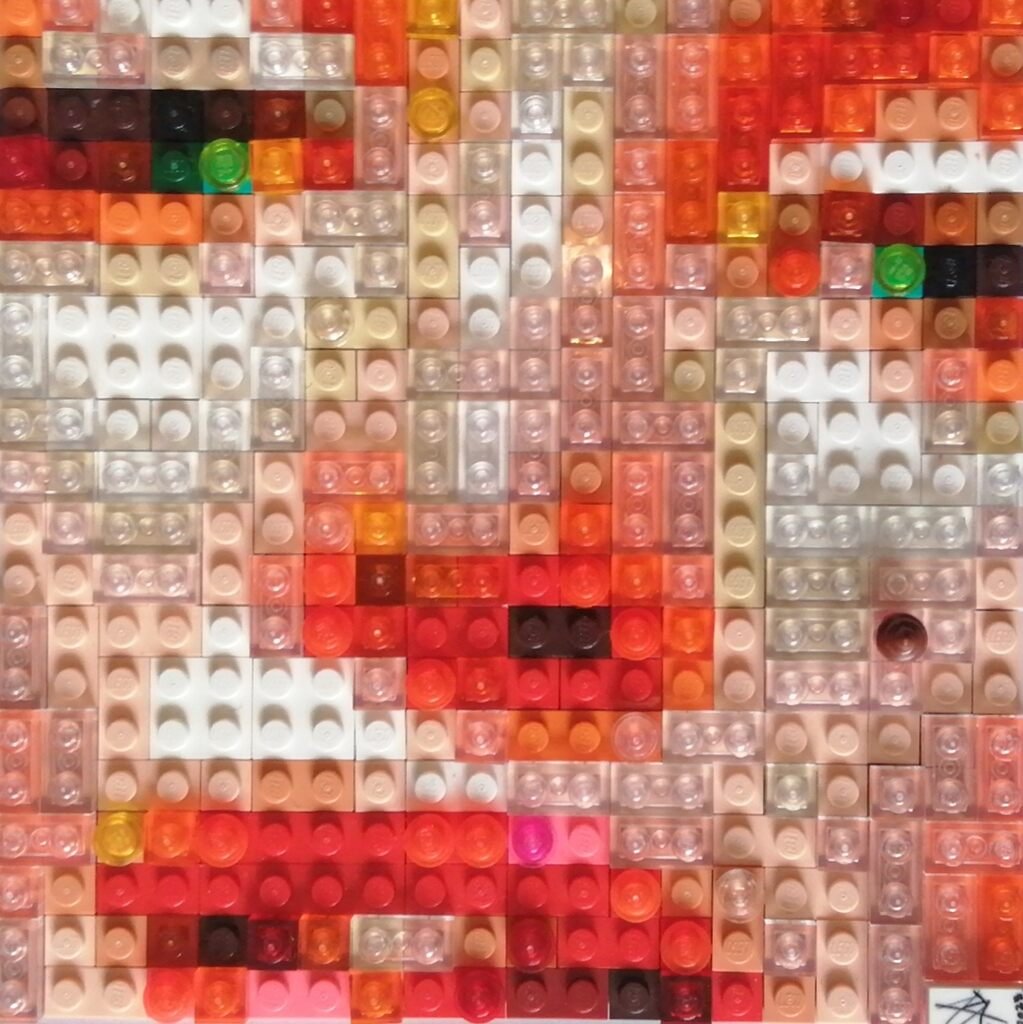
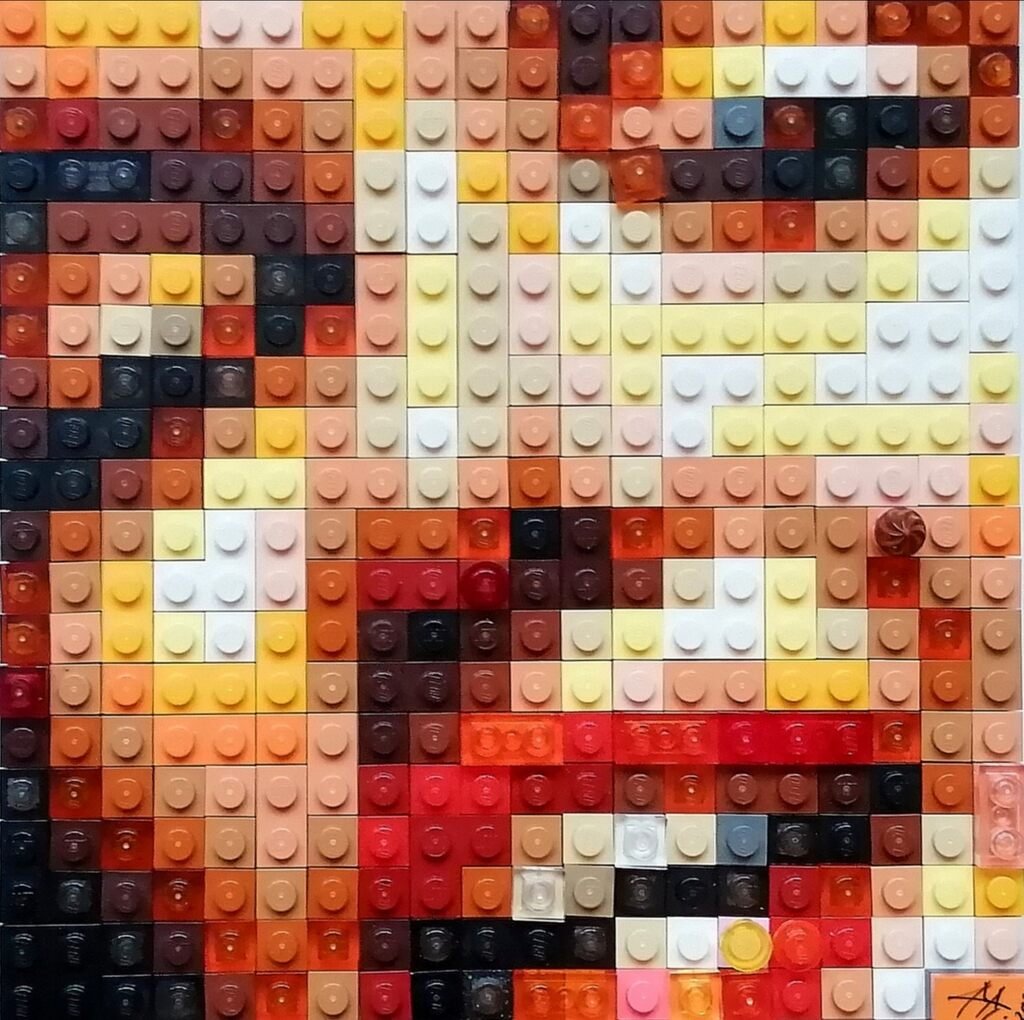
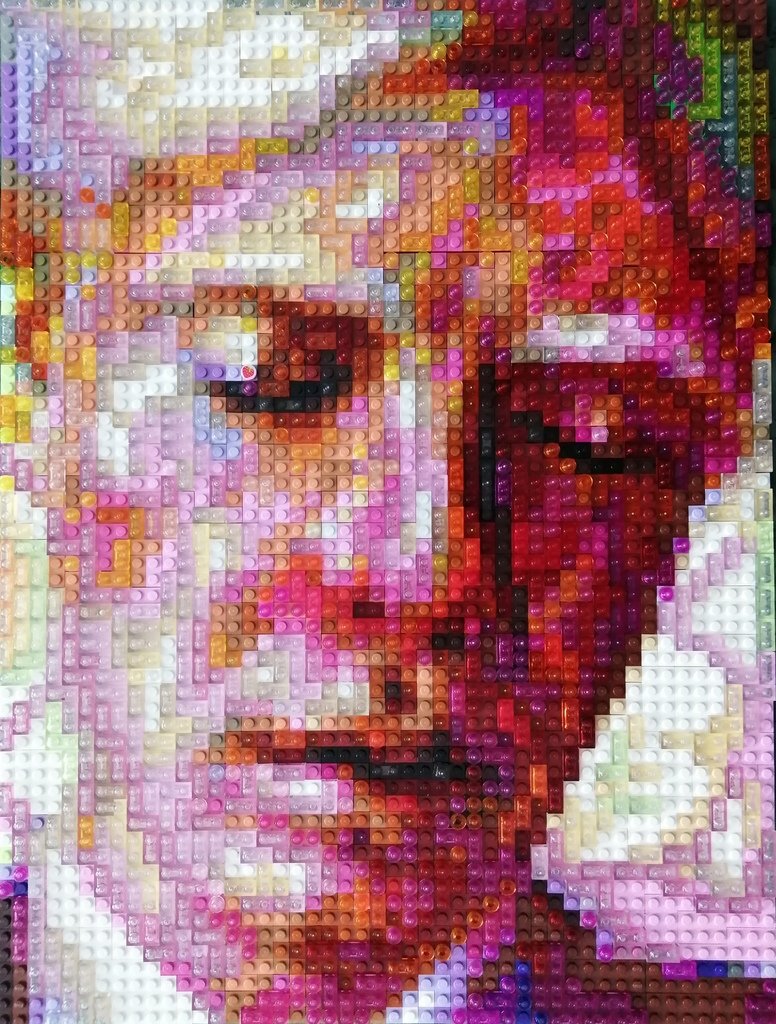
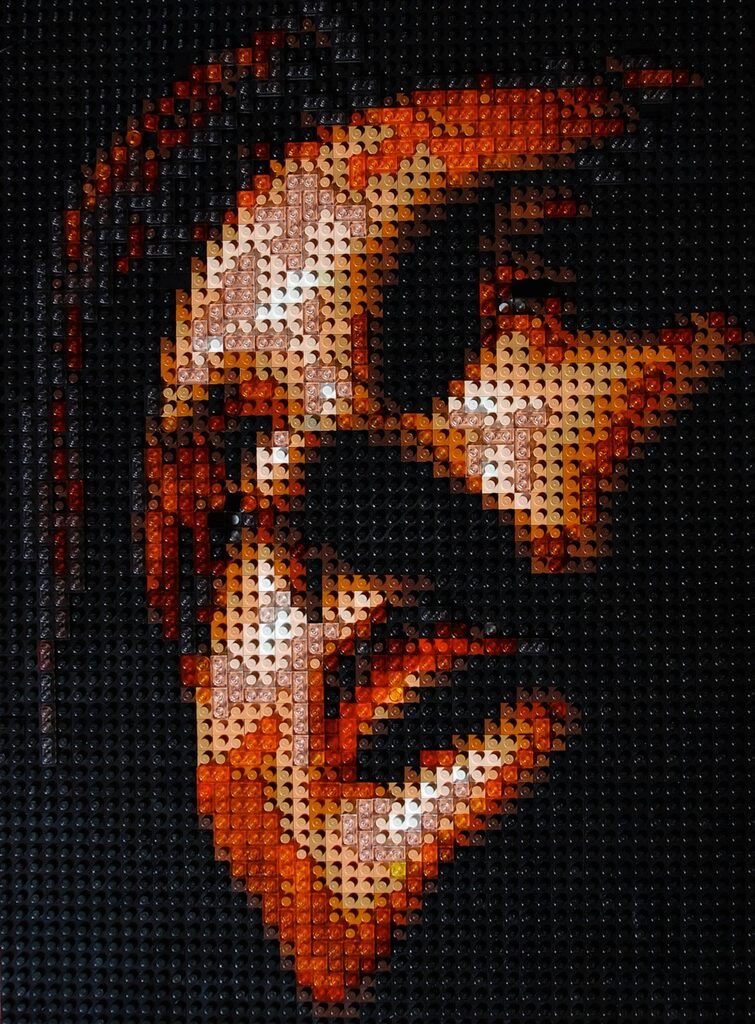
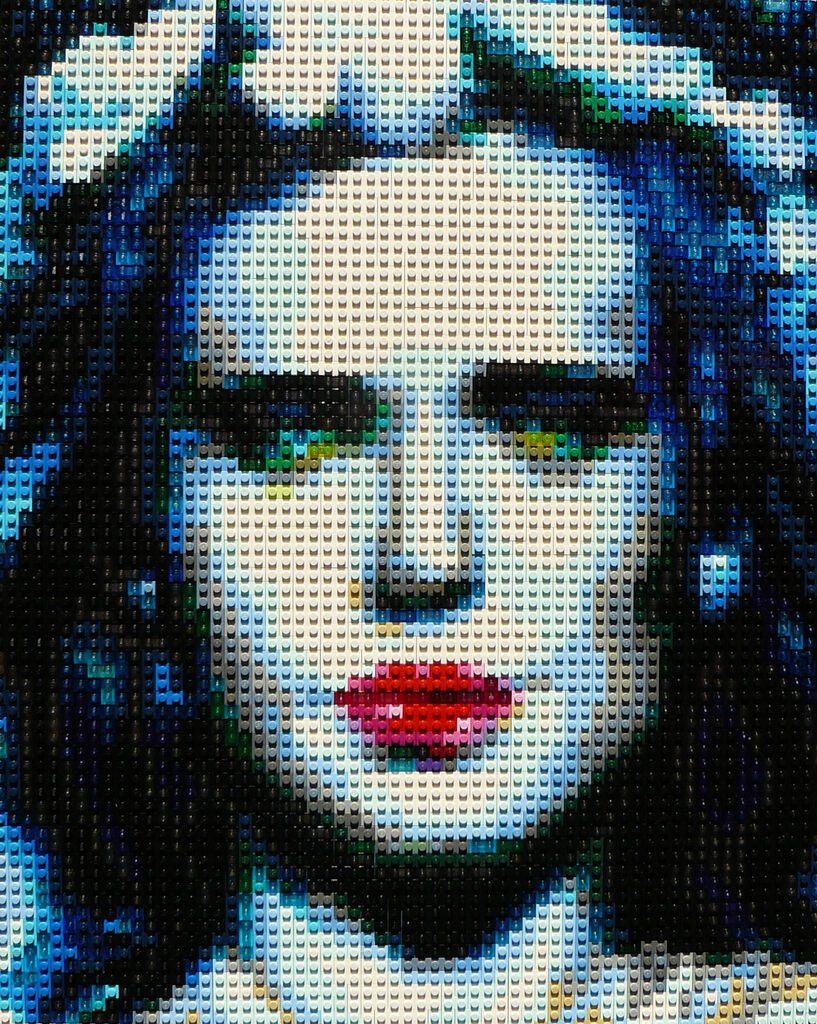
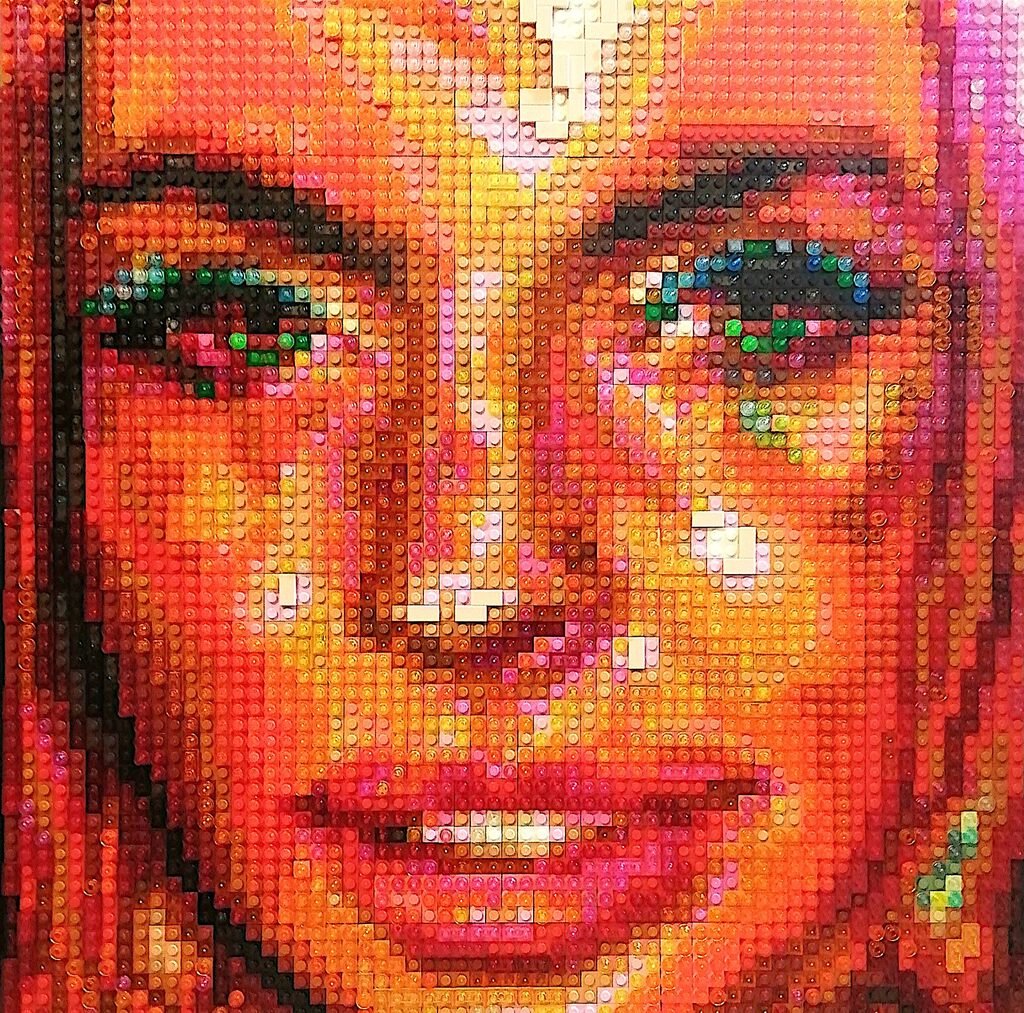



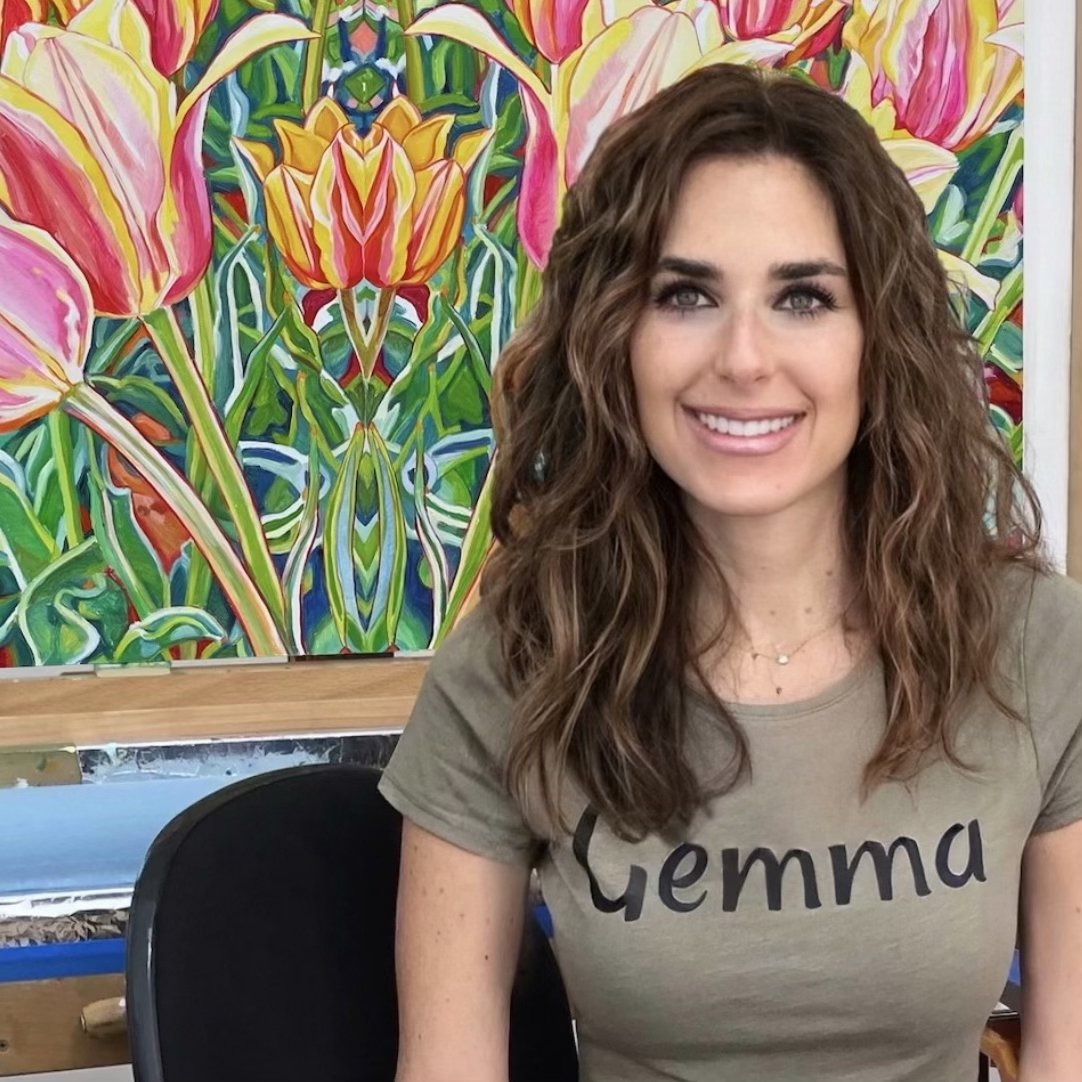









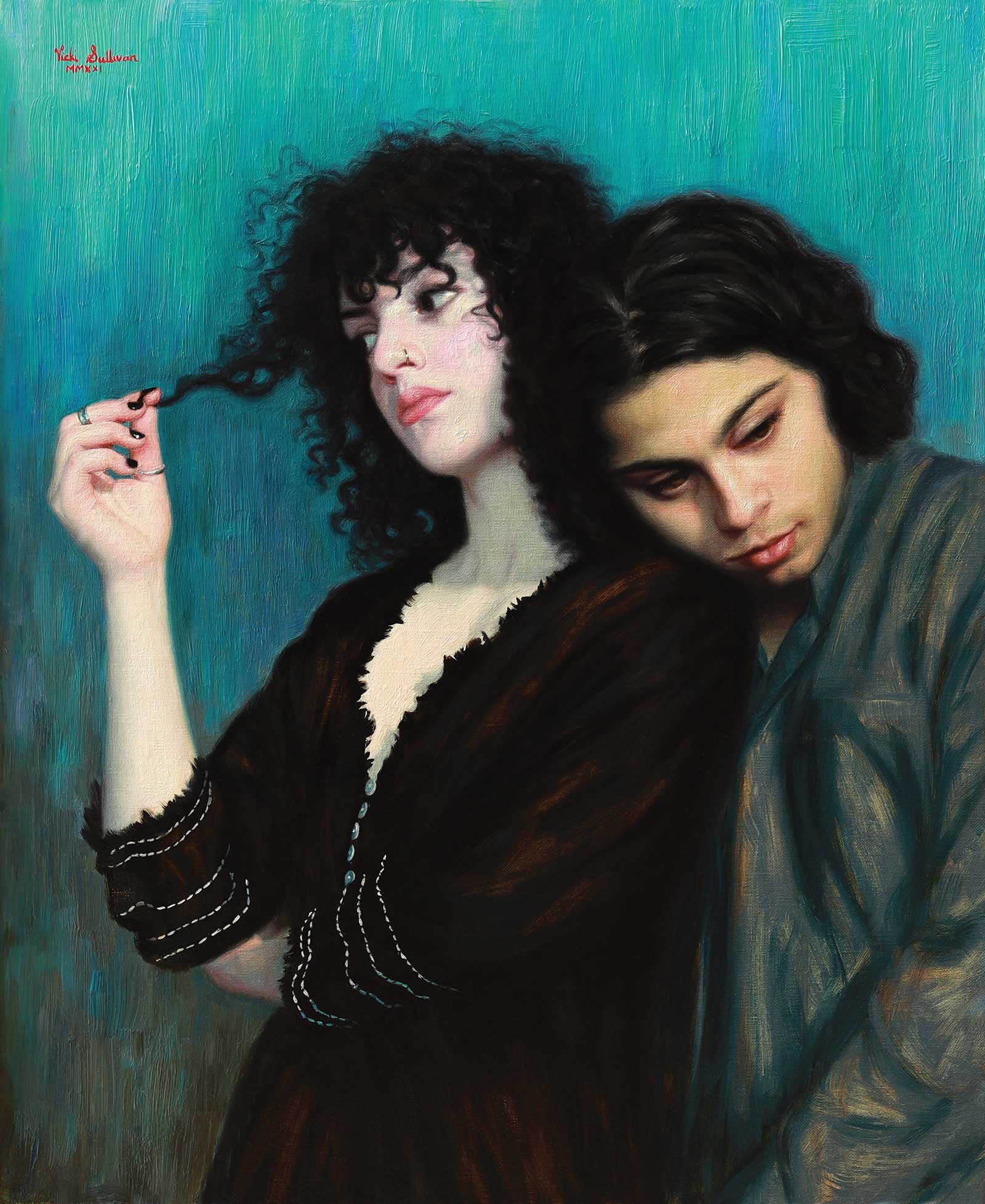















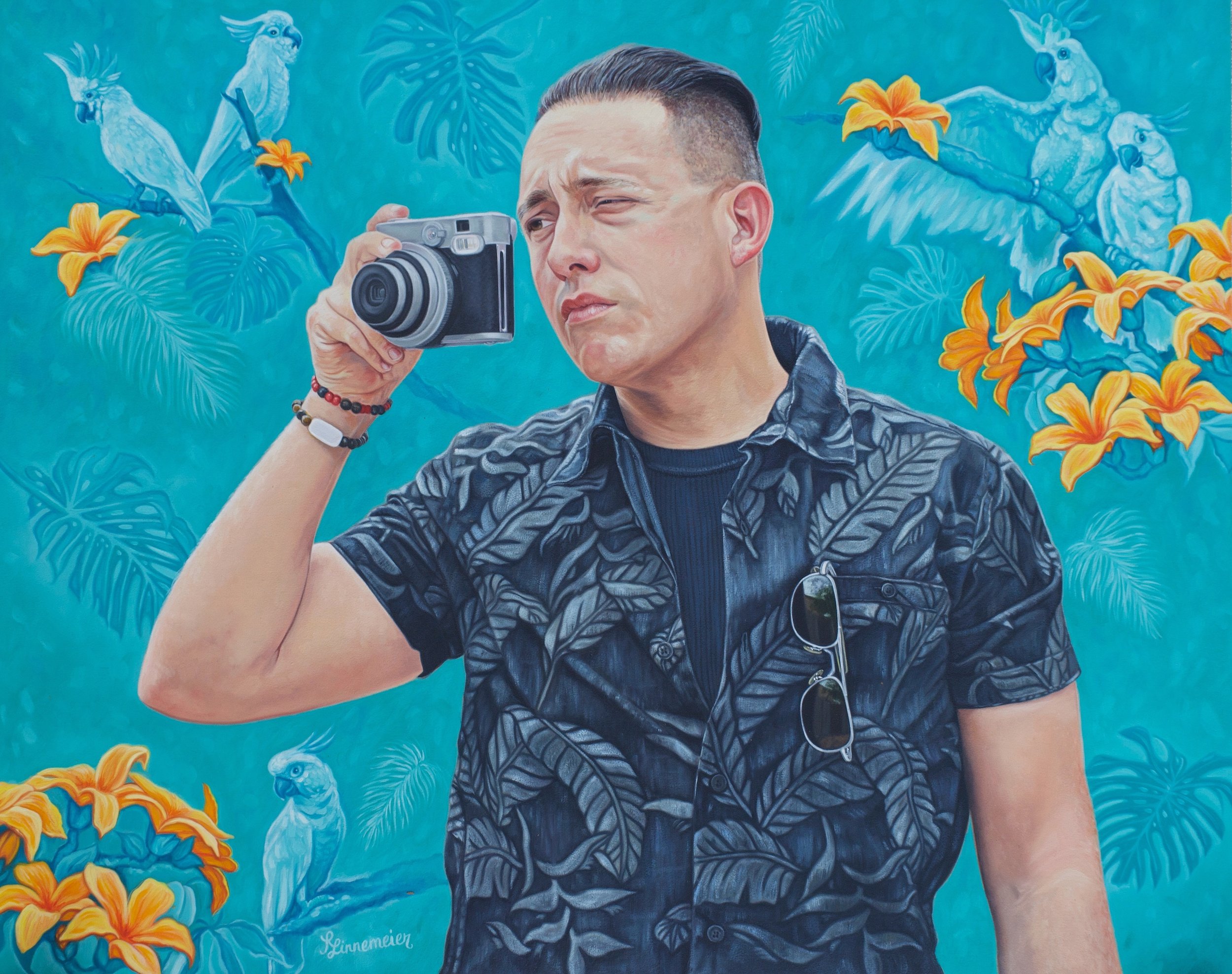






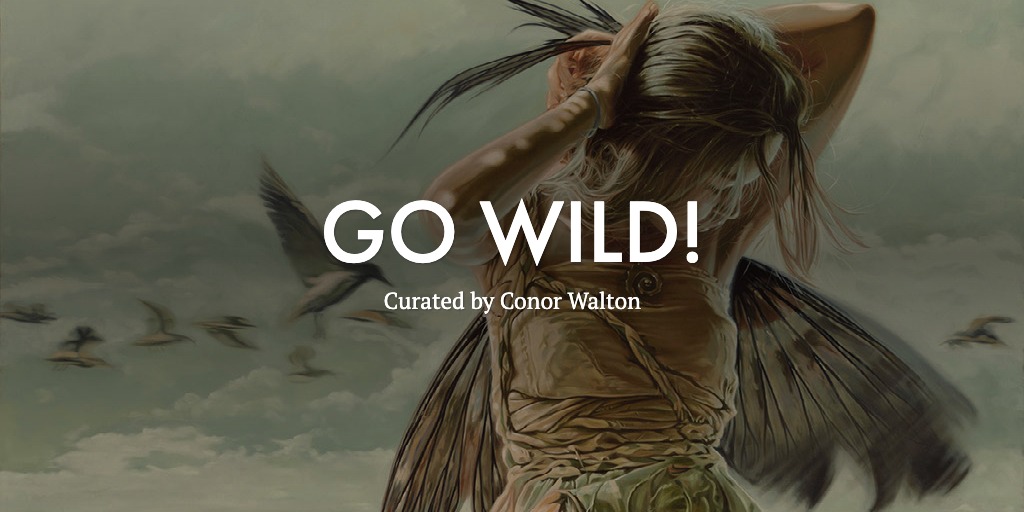
Lukas Moll is a queer artist based in Cologne, Germany. His work is deeply rooted in the experiences and struggles of the LGBTQ+ community, aiming to bring visibility to themes like isolation, discrimination, and resilience. He also explores topics such as sexual violence and abuse, using art as a medium for healing and advocacy.